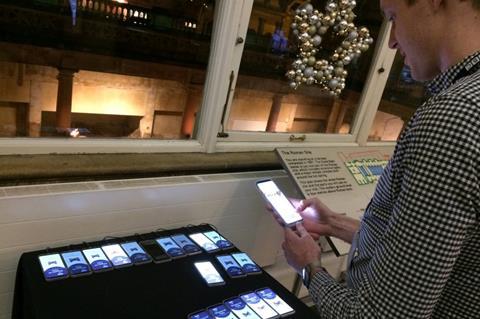As 5G rollouts accelerate, IBC365 speaks with BBC R&D’s Ian Wagdin about what role the new generation of connectivity might play in production.

Much of the conversations around the benefits of 5G for the media and entertainment industry focus on the delivery of content – 5G broadcasting or the benefits of streaming over 5G. But 5G could also be transformative for the creative side of the industry.
The industry relies on many forms of cabling and connectivity to transport pictures and sound, from SDI to IP to satellite. More recently, bonded cellular links have become increasingly commonplace, using 3G or 4G connections to transmit a live video feed – particularly for contribution - over mobile networks.
As BBC R&D senior technology transfer manager Ian Wagdin explains: “Bonded cellular units have revolutionised workflows in newsgathering by allowing journalists and crews go live from anywhere with suitable coverage using a simple backpack or camera mounted device to encode and relay video without the need for large vehicles and lots of cables.”
BBC R&D – the research and development arm of the British broadcaster – first began looking at 5G around four years ago, but a lot of the focus was on distribution.
- Read more: 5G: The impact on broadcasting
Around 18 months ago, the focus shifted to what 5G might bring to production. What benefits could it offer beyond being faster or less laggy?
Wagdin, who chairs the EBU’s 5G content production group, says much of the focus has been on whether 5G can solve some issues such as concerns around spectrum as the industry moves away from a digital terrestrial TV model.
“We use quite a lot of radio links during a live production, so the question we looked at is where 5G might fit into that space, and how far can we push it so it meets some of the stretch user cases?
“We’ve done quite a bit of work right across the EBU about how we might use 5G in production and fed that back into the standards bodies, such as the 3GPP.”
That includes a study item in 3GPP on audiovisual production such as monitors, radio mics, radio cameras, contribution links, right up to satellite replacement.
“You might have a large sporting event such as the Tour de France that could see 5G from planes replacing pure radio cameras rather than using contribution 4G radio cameras,” he explains.
“The study came up with a number of requirements that are being developed into technical specifications purely for audiovisual video production. Some of those are low latency links for radio mics and cameras, while others are around high reliability reducing packet error rate, to functionality beyond news production.”
Wagdin, who joined BBC R&D in 2015 having worked across the Corporation’s News, Television, Children’s and Technology departments, is keen to point out that 5G is just one of the technologies BBC R&D is currently looking at. Other options include other types of IP, such as fibre and Wi-Fi.
“The key point for us is as we move to more IP-based production, looking at the transport mechanisms for IP – be it Wi-Fi, or fibre, or 5G or 6G, or whatever comes along – it will become increasingly important to us.
“As an industry, there are others providing that kind of connectivity so we don’t necessarily need to invest so much in how we do IP over wireless if there is already a solution for it – that solution happens to be 5G.”
Slice and dice
The mobile communications world is a rapidly changing one which can be described as more evolutionary than revolutionary.
One key component is network slicing, which will enable a broadcaster to take a dedicated slice of a 5G network to operate almost like a private Wi-Fi network.
5G also allows devices to speak to other devices (the internet of things). Those proximity connections are important to production says Wagdin, but another consideration is how 5G can be used beyond public networks.

“What is interesting is not necessarily what you do on the public network,” he explains. “We’ve seen some commercial networks launch the new radio version of 5G, but as you introduce standalone versions of 5G networks, you can potentially take a box out to create your own network with devices connected to that as a hub and spoke model.
“Most current devices are one-to-one relationships but this use of a private network could offer more flexibility, offering the opportunity to reassess how we use radio on site. On location currently, you may have radio mics, talkback, a mesh network for radio cameras and a Wi-Fi network. There can be quite a few things we do in the radio space in a studio environment.
“If you can bring that down to one solution you’d see some benefits and advantages similar to what we’ve seen over IP – it doesn’t matter what signal you’re carrying over that transport layer, as long as you’re moving ones and noughts and they arrive in the right place at the right time. With 5G we can potentially simplify this.”
This is all being investigated, but Release 16 of the 3GPP 5G standard – expected to be completed in June – will see core elements in the network, such as network speed transfers increase dramatically, and that brings elements such as ultra-reliable low-latency communications into the frame.
5G edge
In a blog last year, Wagdin outlined how adjacent technologies such as edge computing will play a role in production. “Edge computing may allow for processing of signals closer to the point of acquisition and therefore enable remote production workflows to become more streamlined,” he wrote.
“If we can extend out beyond the boundaries of our managed networks and connect devices using the same transport and control protocols, there could be much more flexibility in the systems and open standards that we use. This could mean that we would be able to receive signals from any device connected to the network and not require dedicated hardware and workflows for multiple different types of connections.”
The R&D division has already demonstrated some use cases for 5G. At IBC2019, it took part in IBC’s Accelerator programme to trial a 5G Smart Tourism application using low-latency, high bandwidth connectivity to support VR and AR applications.
The trial, which took place at the Roman Baths in the UK city of Bath, allowed participants to use a mobile phone to see what the baths would have looked like in Roman times by superimposing video images on a real location.
Rather than power this in the smartphone itself, the VR scene used a 5G mesh network provided by the University of Bristol, in order to cut down latency and improve rendering.
- Read more: The 5G space race
This kind of partnership approach is vital to developing 5G for broadcast and production, says Wagdin.

“There are lots of really interesting pilot projects being trialled across Europe,” he explains. “We’ll build on those. It’s not just a BBC approach – a number of broadcasters across Europe are testing this technology.”
Last year, Disney used VR technology in its production of The Lion King. IBC365 asks if BBC R&D’s tests with VR and 5G could be applied to live production?
“The challenge there is how to you render quickly enough, and how to you display it quickly enough?” says Wagdin. “5G has some answers to both of those questions. Very powerful compute at the edge means you can have very low latencies to deliver content.”
“We saw that in the trials in Bath. That trial was based on the concept of edge compute and delivering just-in-time assets to somebody holding a smartphone. If that phone was a camera and you had that same information, you could put in alongside those assets augmented reality experiences using similar technology.”
For news, the main user case for 5G is to deliver content to the air quicker. 5G will support solutions like bonded cellular in reporting news on location.
The other side is connecting multi-camera setups so you can switch between cameras. “That can be quite tricky at the moment on location because you may have different latencies on different cameras,” he explains. “So things get more complicated as you have more cameras in use.”
The advent of standalone 5G networks – ones that aren’t reliant on existing 4G deployments, as most current 5GNR rollouts do, will enable more tests in 5G round network slicing.
“Standalone 5G networks means we’ll probably be doing more exploring what a non-public network and network slicing really mean and how we connect devices to it.
“How do you authenticate devices? What works and doesn’t? What are the metrics for using these on production? We’ll be doing a lot of testing around those issues.
“We may also look at deploying network in a box solutions, too. As we’re getting our hands on more 5G technology, we can begin to learn what ways to use it in productions.”
- Read more: The Catalyst of media/telco innovation
























No comments yet